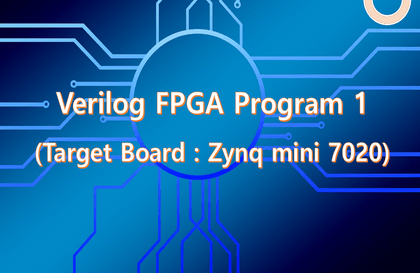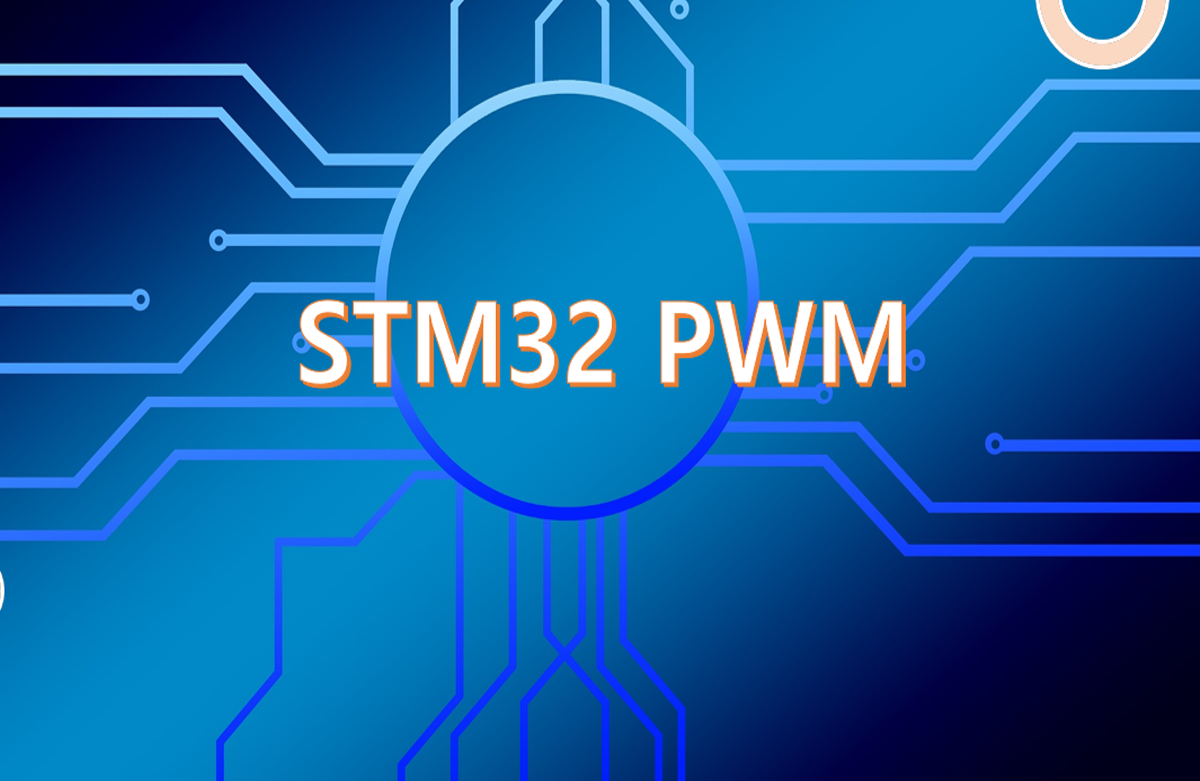
Verilog FPGA Program 1 (Zynq mini 7020)
alex
In this course, students will learn how to implement Verilog using the Zynq board.
初級
Verilog HDL, FPGA, zynq
This tutorial explains how to implement PWM using STM32 MCU.

PWM implementation using STM32 MCU
STM32 MCU program implementation
Converting an analog signal into a digital signal?
If you're curious, learn why! 🤗

PWM stands for Pulse Width Modulation. It modulates the width of a pulse, and is used to generate and change analog signals using digital signals. PWM is widely used for control purposes, such as motor control and LED brightness control.
The concept of PWM is quite simple. However, the method of implementing PWM varies depending on the MCU. This lecture will teach you how to implement PWM on ST's STM32 MCU and how to implement PWM for various purposes.
This tutorial explains how to implement PWM with the STM32F411. It covers generating and analyzing PWM signals using the NUCLEO-F411RE development board provided by ST. A Windows development program is provided, allowing you to modify PWM properties (frequency, pulse width, dead time, alignment mode, etc.) and analyze the PWM. The compiler tool used is STM32CubeIDE v1.9.0.
💾 Please check before taking the class!
This book provides detailed explanations, from project creation to source file analysis, so even beginners to ST MCUs can easily follow along. All source code explained in the lectures is provided. We also provide the source code for the Windows development program. We hope this book will be of great help to those using PWM.
This lecture details how to generate PWM signals on ST's STM32 MCU. It explains the relationships between the signals of each PWM when generating multiple PWMs and which modes to use to configure the signal for your specific needs. You can use the provided Windows debugging program to generate and test various PWM signals.
1️⃣
PWM signal
Creation and Analysis
2️⃣
PWM property analysis
(frequency, pulse width, etc.)
3️⃣
PWM signal
Relationships and Modes
Q. Is there anything I need to prepare to attend the lecture?
The lecture will be conducted on the NUCLEO-F411RE board. If you haven't already done so, please review the content first and then purchase the board later to test it on your own.
Q. What program tools do you use?
We use STMCubeIDE v1.9.0, provided free of charge by ST. Please install it before attending the course.
I've worked as a developer for over 20 years at both large and small companies, and I currently run a small business. I've developed an ISP (Image Signal Processing) ASIC for CCTV, and I've developed numerous FPGA-based products, including OLED inspection equipment and DAQ (Data Acquisition System). Beyond FPGAs, I have extensive experience in software development (STM32, PIC32, AVR, ATMEGA, etc.), circuit design, and Windows programming.
Who is this course right for?
Anyone interested in STM32 MCU
For those who want to implement PWM
Need to know before starting?
C language
1,731
Learners
76
Reviews
127
Answers
4.8
Rating
19
Courses
저는 지난 20여년 동안 대기업, 중소기업에서 개발자로 일해왔고
현재는 작은 기업의 대표로 있습니다.
주요 경력사항은
Verilog HDL을 이용한 FPGA 설계
CCTV용 ISP ASIC 개발 (약 10년)
OLED Display 검사장비 개발 (약 3년)
FPGA를 이용한 장비 개발
MCU FW
STM32
PIC32
AVR, ATMEGA
DSP (TI)
Windows Application Program
Visual Studio MFC, C++
입니다.
All
67 lectures
Course Materials:
All
2 reviews
5.0
2 reviews
Reviews 1
∙
Average Rating 5.0
5
Hello. I have a question because I don't have basic knowledge. You said that if you use ST Link internally, you don't need to buy it, but if you follow the PDF, can you say that you don't need to buy it?!
Yes. If you follow the lecture, you don't need it. Since I develop the HW myself, I use an external, separate st-link.
$17.60
Check out other courses by the instructor!
Explore other courses in the same field!